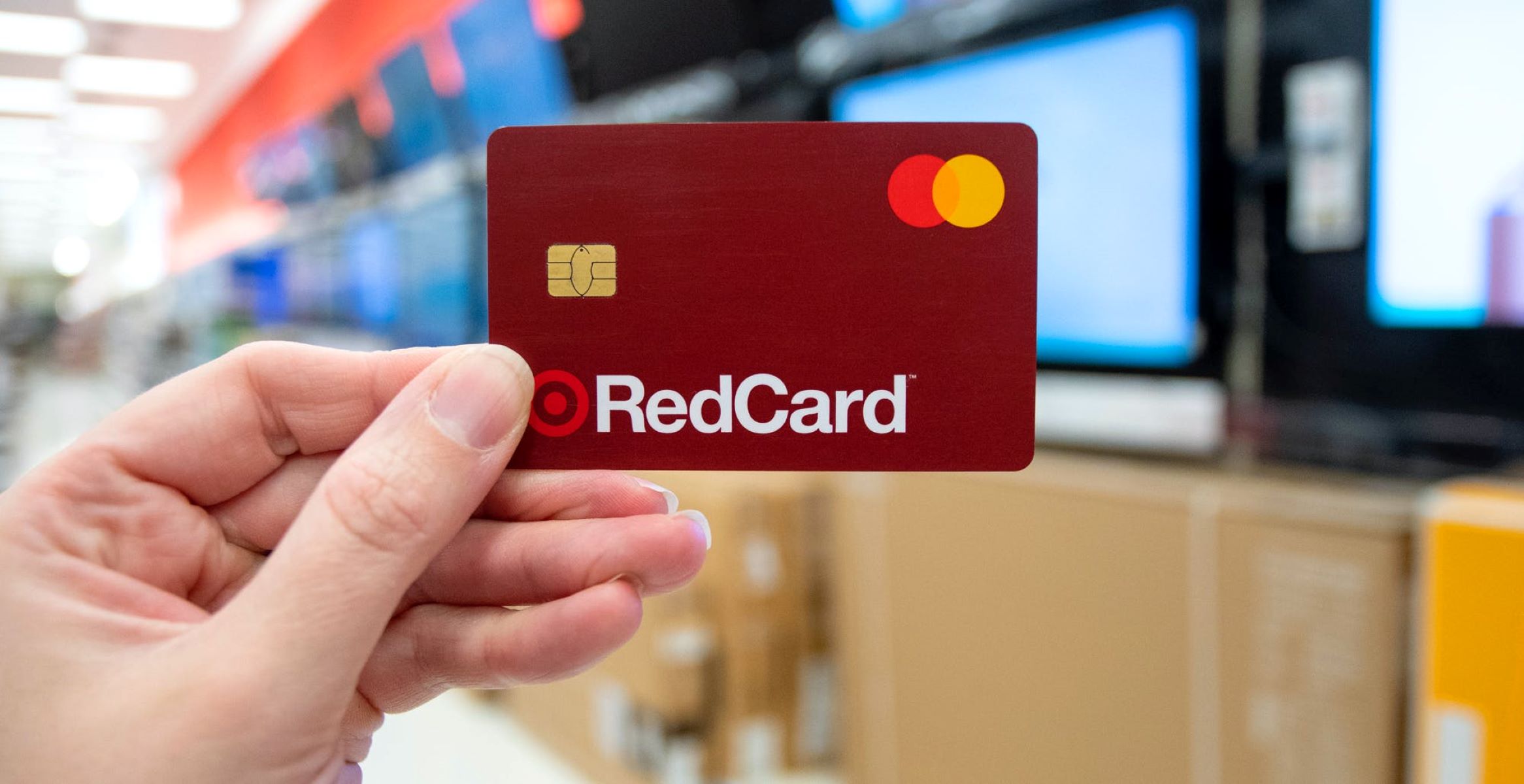Home>Finance>Why Do Credit Card Companies Target College Students


Finance
Why Do Credit Card Companies Target College Students
Published: November 9, 2023
Discover why credit card companies specifically target college students and explore the impact on their finances. Gain insights into the unique financial challenges faced by students, as well as the strategies employed by credit card companies to attract this demographic.
(Many of the links in this article redirect to a specific reviewed product. Your purchase of these products through affiliate links helps to generate commission for LiveWell, at no extra cost. Learn more)
Table of Contents
- Introduction
- The allure of credit cards for college students
- Marketing strategies employed by credit card companies
- Relationship between credit card usage and financial literacy
- Impact of credit card debt on college students
- Measures to protect college students from predatory credit card practices
- Conclusion
Introduction
As young adults embark on their college journeys, they are often exposed to a myriad of new experiences and responsibilities. One such responsibility that they may encounter is managing personal finances, which includes the use of credit cards. Credit cards can provide a sense of financial freedom, convenience, and a pathway to building credit history.
However, it is no secret that credit card companies often target college students as potential customers. They view this demographic as a lucrative market, seeking to capitalize on their financial inexperience and easy accessibility to credit options. This targeted marketing can be both enticing and concerning for college students who may not have a firm grasp on their financial wellbeing.
The purpose of this article is to delve into the rationale behind credit card companies’ interest in college students and explore the marketing strategies employed to attract them. Additionally, we will examine the relationship between credit card usage and financial literacy among college students, as well as the potential impacts of credit card debt on their lives.
Moreover, we will discuss the measures that can be taken to protect college students from predatory credit card practices and empower them to make informed financial decisions. By understanding the dynamics of credit card targeting and its implications for college students, we can equip ourselves with the knowledge necessary to navigate the world of personal finance effectively.
In the following sections, we will uncover the allure of credit cards for college students, the marketing strategies employed by credit card companies, the relationship between credit card usage and financial literacy, the impact of credit card debt on college students, and the measures to protect them from predatory practices.
The allure of credit cards for college students
For college students, credit cards can hold a significant appeal. They offer a convenient and flexible means of making purchases, especially for those living away from home and managing their own expenses for the first time. The allure of credit cards lies in their ability to provide a sense of financial independence, allowing students to make purchases even if they do not have immediate cash on hand.
Furthermore, credit cards often come with additional benefits such as reward points, cashback programs, and exclusive discounts. These perks can be particularly enticing for college students who are always on the lookout for ways to stretch their budgets. The promise of earning rewards or saving money can be persuasive, tempting students to open credit card accounts.
Moreover, credit cards can be a valuable tool for building credit history. Establishing a strong credit score during college is vital for future financial endeavors, such as renting an apartment or applying for a car loan. By responsibly using a credit card, college students have the opportunity to demonstrate their creditworthiness and establish a positive credit history.
Additionally, credit cards can provide a safety net in case of emergencies. Unexpected expenses, such as medical bills or car repairs, can arise at any time. Having a credit card can offer a sense of security, knowing that there is a financial backup plan available when needed.
However, it is crucial to recognize that while credit cards can offer benefits, they also come with potential drawbacks. It is easy for college students to overspend and accumulate debt, especially if they do not have a clear understanding of how credit cards work and the importance of making timely payments. Therefore, it is important to exercise caution and responsible use when venturing into the world of credit cards.
In the next section, we will explore the marketing strategies employed by credit card companies to attract college students and delve into their implications.
Marketing strategies employed by credit card companies
Credit card companies employ various tactics to capture the attention of college students and entice them to sign up for their credit card offerings. Understanding these marketing strategies is vital in order to recognize and navigate the potential pitfalls.
One common approach taken by credit card companies is setting up booths or tables on college campuses. They often offer free merchandise or enticing promotional giveaways to attract the attention of students passing by. These giveaways can range from t-shirts and water bottles to more substantial items like gift cards or electronics. By offering freebies, credit card companies hope to create a firsthand connection with students, making it more likely for them to consider signing up for a credit card.
Another common marketing technique is to partner with student organizations or clubs on campus. Credit card companies may sponsor events or provide financial support in exchange for the opportunity to market their credit card products. These partnerships give credit card companies direct access to captive audiences made up of college students who may be more receptive to their offerings due to the perceived endorsement from the university or organization.
Furthermore, credit card companies often target students through direct mail campaigns. College students receive a barrage of credit card offers in their mailboxes, enticing them with introductory offers, such as low or zero percent interest rates for a certain period. These mailings not only highlight the benefits of the credit cards but also emphasize the convenience and accessibility that credit cards offer, presenting them as a necessity for college life.
In recent years, credit card companies have also embraced digital marketing to reach college students. Through online advertisements on social media platforms and search engines, credit card companies can precisely target this demographic based on their online behaviors and interests. They may utilize influencers or brand ambassadors to promote their credit card products, leveraging the trust and relatability of social media personalities to entice college students to take advantage of their offerings.
This targeted marketing can create a sense of urgency and exclusivity, making credit cards seem like a desirable and must-have financial tool for college students. However, it is important for students to critically evaluate these marketing campaigns, consider their own financial situation and goals, and make an informed decision rather than succumbing to the allure of immediate rewards or promotional offers.
In the next section, we will explore the relationship between credit card usage and financial literacy among college students.
Relationship between credit card usage and financial literacy
The relationship between credit card usage and financial literacy among college students is a crucial aspect to consider. Financial literacy refers to an individual’s understanding and knowledge of personal finance management, including concepts like budgeting, saving, and debt management.
Unfortunately, many college students lack the necessary financial literacy skills to navigate the complexities of credit cards effectively. As a result, they may find themselves susceptible to making poor financial decisions, accumulating excessive debt, and struggling to manage their finances.
One of the primary reasons for this lack of financial literacy among college students is the absence of formal financial education in school curricula. The majority of students enter college without sufficient knowledge about personal finance, including how credit cards work, interest rates, and the importance of making timely payments. Without this foundational knowledge, they may easily fall into the debt trap and face long-term financial consequences.
Additionally, the allure of credit cards and the ease of obtaining them can lead college students to engage in impulsive spending. They may not fully grasp the implications of charging purchases to their credit cards and the long-term commitment it entails. Without a proper understanding of the potential consequences, students may find themselves overwhelmed by credit card debt and struggling to make minimum payments.
Moreover, the influence of peer pressure and social norms can further contribute to irresponsible credit card usage amongst college students. In a desire to keep up with their peers or maintain a certain lifestyle, students may resort to using credit cards without considering the implications on their financial wellbeing.
However, it is important to note that responsible credit card usage can actually be a valuable learning experience for college students. With the right knowledge and guidance, credit cards can be used as a tool to build credit history, practice financial discipline, and develop responsible spending habits.
Thus, promoting financial literacy among college students becomes paramount. Educational institutions, alongside credit card companies, should take active steps to provide financial education programs and resources that equip students with the necessary skills to navigate credit cards and personal finance responsibly.
In the next section, we will explore the potential impacts of credit card debt on college students.
Impact of credit card debt on college students
Credit card debt can have significant impacts on the lives of college students, both during their academic years and into their future. It is essential to understand these potential consequences in order to prevent or address the negative effects of excessive debt.
First and foremost, credit card debt can create a financial burden for college students. High interest rates and late payment fees can quickly accumulate, making it challenging to manage payments on top of other expenses such as tuition, textbooks, and housing. Students may find themselves facing overwhelming debt and struggling to make ends meet, leading to financial stress and anxiety.
Additionally, credit card debt can negatively impact a student’s credit score. Failing to make timely payments or carrying high balances can result in a lower credit score, making it more challenging to secure future loans or financial opportunities. This can hinder their ability to obtain favorable interest rates for car loans, mortgages, or even future credit card applications.
Moreover, credit card debt can take a toll on the emotional wellbeing of college students. The constant worry and stress associated with mounting debt can affect their mental health, causing anxiety, depression, and feelings of hopelessness. The pressure to keep up with minimum payments and the fear of falling deeper into debt can significantly impact their overall quality of life.
Furthermore, credit card debt can delay or hinder long-term financial goals for college students. Saving for post-graduation plans, such as starting a business, pursuing further education, or traveling, can become increasingly challenging when student loan payments and credit card debt take precedence. The burden of debt can limit their options and hinder financial independence.
However, it is crucial to note that not all credit card debt is inherently negative. When managed responsibly, credit cards can contribute to building a positive credit history and financial discipline. Paying off balances in full, making timely payments, and keeping credit utilization low can help students establish good credit and prepare for future financial endeavors.
Nevertheless, it is essential for college students to carefully consider their financial situations and make informed decisions when using credit cards. Developing a budget, understanding the terms and conditions of credit card agreements, and seeking financial guidance from trusted resources are essential steps in mitigating the potential negative impacts of credit card debt.
In the next section, we will discuss measures to protect college students from predatory credit card practices.
Measures to protect college students from predatory credit card practices
Given the potential risks associated with credit card usage among college students, it is crucial to implement measures that protect them from falling victim to predatory practices. Various steps can be taken to promote responsible credit card usage and safeguard students’ financial well-being.
First and foremost, increased financial education is paramount. Educational institutions should prioritize incorporating financial literacy programs into their curricula. These programs would educate students on personal finance topics, including credit card management, budgeting, debt repayment, and the importance of maintaining a good credit score. By equipping students with the necessary knowledge, they can make informed decisions and navigate the credit card landscape more responsibly.
Furthermore, universities and colleges should establish partnerships with reputable credit counseling agencies or financial institutions. These partnerships can offer students access to resources, counseling sessions, and workshops that focus on credit card management and financial planning. Providing such support on campus can help students make sound financial decisions and seek guidance when needed.
Transparency in credit card marketing is essential. Credit card companies should disclose all terms, fees, and interest rates clearly and prominently in their marketing materials. This transparency helps students understand the true costs associated with credit card usage and empowers them to compare offerings and make educated decisions about which card best suits their needs.
Setting limits on credit card access can also be an effective measure. For example, universities can implement policies that require parental consent or proof of financial literacy training before students can open credit card accounts. This requirement ensures that students have a certain level of understanding and support in managing credit cards before entering into financial agreements.
Add
Conclusion
Credit card companies targeting college students is a common practice that requires careful consideration. While credit cards can offer convenience and financial benefits, they also pose risks, particularly for financially inexperienced students. Understanding the allure of credit cards, the marketing strategies employed, and the potential impacts on college students is essential in promoting responsible financial behaviors and protecting their well-being.
Financial literacy plays a crucial role in safeguarding college students from falling prey to predatory credit card practices. By providing comprehensive financial education, universities and colleges can equip students with the knowledge and skills necessary to make informed decisions about credit cards and personal finance as a whole.
In addition, credit card companies should practice transparency in their marketing efforts, ensuring that terms, fees, and interest rates are clearly presented. Establishing partnerships with credit counseling agencies can offer students access to resources and guidance to navigate the complexities of credit card management.
Setting limits on credit card access, such as requiring parental consent or proof of financial literacy training, can provide an additional layer of protection, ensuring that students have the necessary support and understanding before opening credit card accounts.
Ultimately, the goal should be to empower college students to make well-informed decisions about credit card usage and develop responsible financial behaviors. Armed with the tools and knowledge to manage credit cards effectively, students can avoid excessive debt, safeguard their credit scores, and lay the foundation for a solid financial future.
By addressing the allure of credit cards, promoting financial literacy, and implementing measures to protect college students from predatory practices, we can create a supportive environment that encourages responsible credit card usage and empowers young adults to navigate their financial journeys with confidence.














